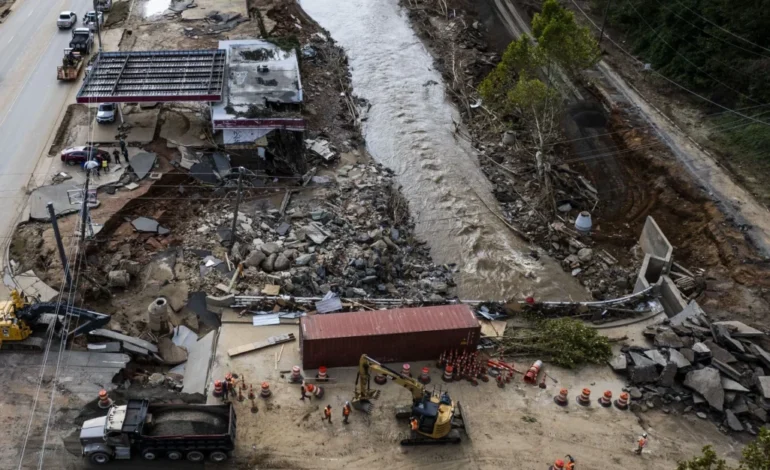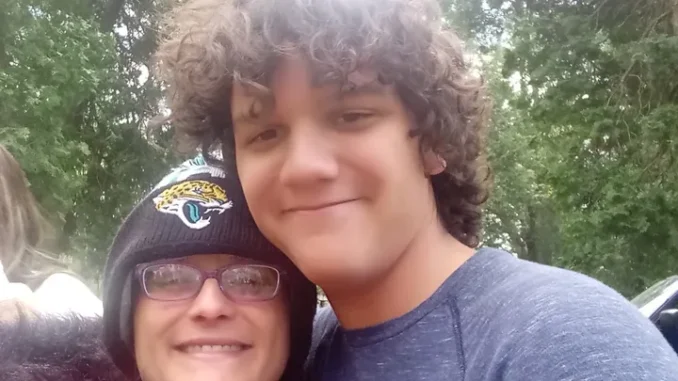
Alleged 200 People “Discovered Alive” in Candler, North Carolina Church During Hurricane Helene Search Operations Proves False
Alleged 200 People “Discovered Alive” in Candler, North Carolina Church During Hurricane Helene Search Operations Proves False: Rumors Debunked by Locals, Obituary Report Circulated, Death Toll Misinformation Corrected as Social Media Hoax Causes Panic Amid Safety Efforts
A viral rumor falsely claiming that 200 to 2000 people were discovered alive in a church in Candler, North Carolina, following Hurricane Helene has been thoroughly debunked by local residents and officials. The misinformation, which spread across social media platforms, significantly disrupted search and rescue operations, leading to confusion and panic throughout the area. The claim, initially made by an X (formerly Twitter) user, Michelle Maxwell, on October 6, 2024, garnered over 744,200 views within a day. Maxwell’s tweet reported that 200 individuals had been “discovered alive” after being trapped for six days in a church with no contact.
As the claim gained traction, locals from Candler, a small unincorporated town in Buncombe County, North Carolina, quickly took to social media to refute the allegations. Many expressed disbelief, emphasizing that the town had not experienced the severe devastation depicted in the viral posts. The town’s infrastructure, while impacted by Hurricane Helene, remained largely intact, and there was no evidence of any group of people being stranded without aid for an extended period, let alone 200 to 2000 people trapped inside a church.
The rumor’s propagation, however, caused confusion and alarm, as people across the country shared and commented on the posts without verifying their accuracy. Social media became a battleground for the truth as the Hurricane Helene Safety Check-In Facebook page, a community forum for affected residents, became the source of clarifications. Sarah Reams, a local resident, posted a detailed refutation, explaining that while the storm had caused some issues, the claims about a large group being stranded in a church were baseless. She went on to clarify that the size and nature of Candler made it implausible for any church in the area to house such a large number of people, further debunking the rumors.
The viral post also led to unintended consequences. According to reports from Reuters and The Washington Post, the spread of misinformation significantly impacted ongoing search and rescue efforts. While emergency responders and volunteers were focusing on providing aid to areas genuinely affected by Hurricane Helene, the false claims diverted resources and attention. Some teams even had to address concerns raised by well-meaning but misled individuals who had seen the viral post and wanted to assist those “trapped” in Candler. The ripple effects of this misinformation underscored the dangerous power of unverified claims on social media, particularly during natural disasters.
Adding to the complexity, several social media posts linked the rumor to calls for financial aid. Reports emerged that Sarah Taylor, another X user, created a Venmo donation page supposedly to help those affected by the alleged crisis. This only added fuel to the fire, as many questioned the legitimacy of the fundraising efforts and raised concerns about potential scams. Taylor’s page was quickly flagged, and authorities have since begun investigating whether the page was set up with ill intent, as no concrete evidence emerged linking the page to any real relief efforts.
While the original post had sparked fear and concern, it also led to a surge of fact-checking from local sources. Many Candler residents worked tirelessly to correct the narrative, emphasizing that conditions in the town, though affected by the hurricane, were far from the catastrophic picture being painted online. The local churches had opened their doors to assist in relief efforts, but no reports supported the idea that a large group had been trapped for days without aid.
This incident reflects a growing challenge in disaster response: the battle against misinformation. Social media has become both a tool for connection and a source of confusion, with false rumors spreading faster than official updates. During Hurricane Helene, the dissemination of unverified reports like the one involving Candler added an extra layer of difficulty to already complex operations. Emergency responders, local authorities, and residents were forced to not only contend with the storm’s aftermath but also address the widespread panic caused by baseless rumors circulating online.
In the aftermath of the viral rumor, many have called for better fact-checking measures on social media platforms. The rapid spread of misinformation, particularly in crisis situations, has become a growing concern for both authorities and the public. While platforms like X, Facebook, and Instagram offer users the ability to share real-time updates, they have also become breeding grounds for false information that can complicate rescue operations and public safety efforts.
This incident has sparked important conversations around the responsibility of both social media users and platform providers. Many are advocating for more stringent protocols to prevent the spread of hoaxes, especially during natural disasters when the public relies heavily on accurate information. The need for clear communication between local authorities, media outlets, and the public is paramount to ensure that rumors do not overshadow legitimate safety efforts.
While the rumor about the 200 people found in the Candler church was debunked, it serves as a reminder of the power of social media to influence public perception, both positively and negatively. For Candler, the false narrative momentarily overshadowed the real efforts being made to support those affected by Hurricane Helene. As the town recovers and relief efforts continue, local residents hope that the incident will be a lesson in the importance of verifying information before sharing it with the world.
In the end, the viral allegation about 200 people discovered alive in a Candler church during Hurricane Helene turned out to be nothing more than an internet hoax, one that had real-world consequences. As search and rescue efforts press on, the people of Candler are focused on rebuilding their community and moving forward, while also reflecting on the need for responsible information sharing in times of crisis.



